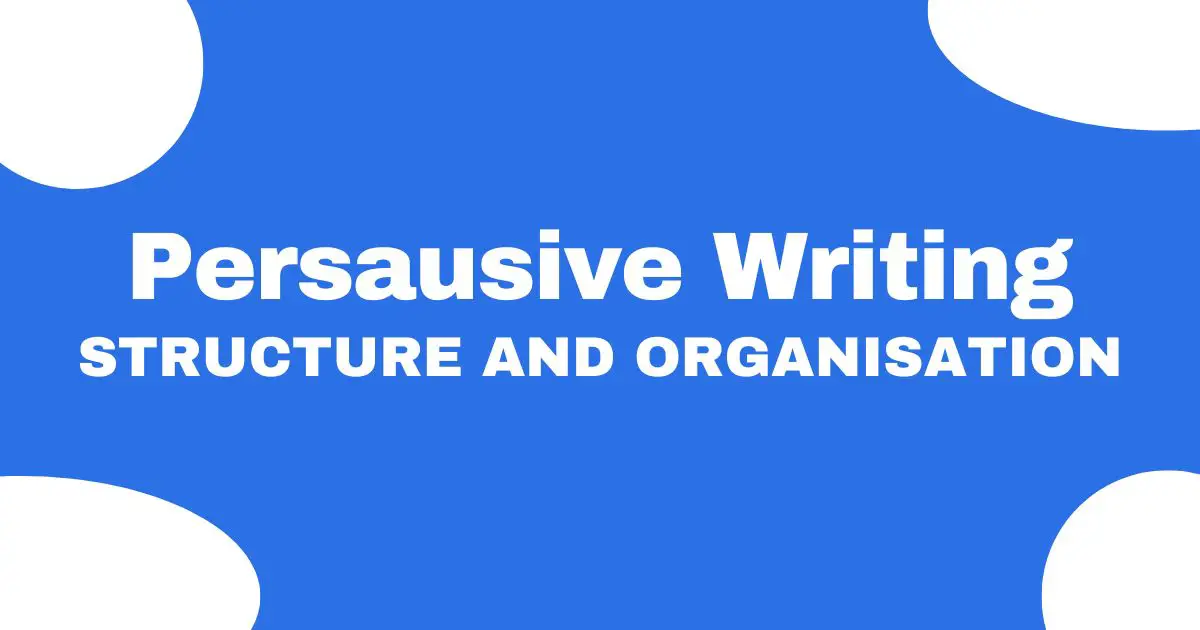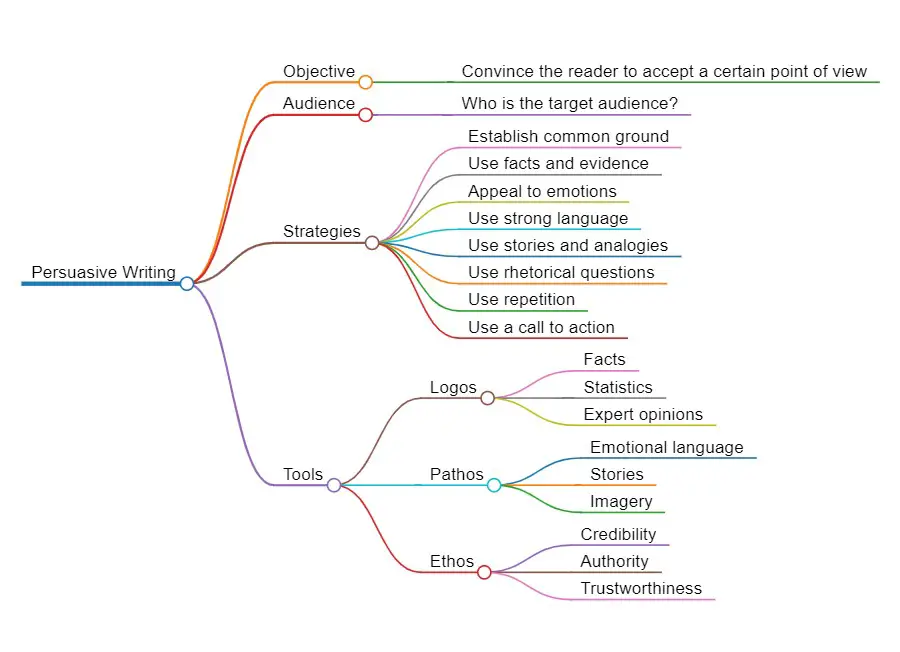Persuasive Writing: Structure and Organisation

Learn how to craft a strong persuasive writing structure, and discover techniques for organising your arguments logically with clear paragraphs.
The persuasive essay format
A persuasive essay follows a specific format that helps you present your arguments effectively. Here’s an overview of the typical structure:
Introduction:
The introduction sets the tone for your persuasive writing and determines whether the reader will continue reading. How do you hook your reader? Start with a question: Begin with a thought-provoking question related to your topic. This encourages the reader to reflect and engage their curiosity. Alternatively use an intriguing statement: Begin with a bold or surprising statement that sparks the reader’s interest. This hooks them and makes them want to know more.
Body paragraphs:
Begin each paragraph with a clear topic sentence that introduces the main idea or argument of that paragraph. This helps your reader understand the purpose of the paragraph and its relevance to your overall essay. Support your arguments with evidence, examples, and logical reasoning.
Use storytelling, anecdotes, or surprising facts to engage the reader
Storytelling, anecdotes, and surprising facts can captivate your reader and make your writing more engaging. Here’s how to incorporate them effectively:
Share a relevant and compelling story that relates to your topic. Use descriptive language to create vivid images in the reader’s mind. This personalises the issue and draws the reader in.
Share short anecdotes or personal experiences that highlight the importance or impact of your topic. Anecdotes add a human touch to your writing and help the reader connect on an emotional level.
Present surprising or intriguing facts that grab the reader’s attention. These facts should be related to your topic and help create a sense of curiosity and interest.
Counter Arguments:
Acknowledge opposing viewpoints and address them respectfully. Present counter arguments and provide compelling evidence to refute them.
Understanding and addressing counter arguments are essential components of persuasive writing. By recognizing and addressing counter arguments, providing counterarguments to strengthen your overall argument, and offering effective rebuttals, you can make your persuasive writing more convincing and persuasive.
Conclusion:
Summarise your main points and restate your argument. End with a compelling closing statement that leaves a lasting impact on your reader.

Logos seeks to engage the audience’s rationality by constructing logical arguments.
Ethos aims to capture the speaker’s credibility and authority, enhancing the audience’s inclination to trust them.
Pathos endeavours to evoke emotional responses, such as anger or sympathy, in the audience.
Crafting a Strong Essay Statement
An essay statement is a crucial component of persuasive writing as it sets the tone and purpose. Here are some tips for crafting a strong essay statement:
Clear and concise: Your essay statement should clearly state your position on the topic in a concise manner. Avoid vague or ambiguous language.
Specific and focused: Make sure your essay statement addresses the main argument or viewpoint you will be discussing. It should be specific and focused to provide a clear direction for your writing.
Strong and persuasive: Your essay statement should convey confidence and conviction. It should be strong enough to grab your reader’s attention and make them interested in reading further.
Conclusion:
Structure and organisation play a vital role in persuasive writing. By following the persuasive essay format, crafting a strong essay statement, and organising your arguments logically with clear paragraphs, you can create a compelling and persuasive piece of writing.
